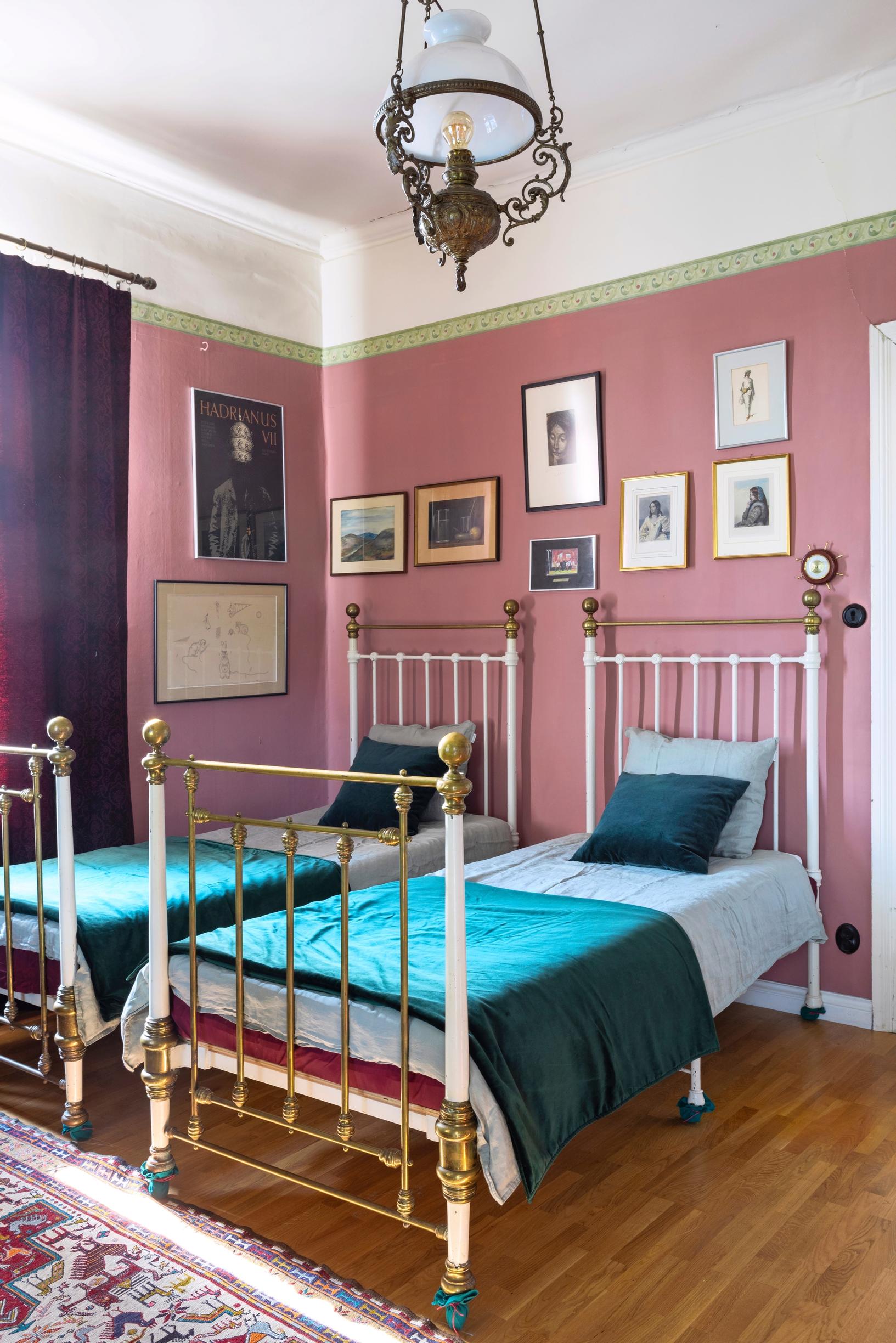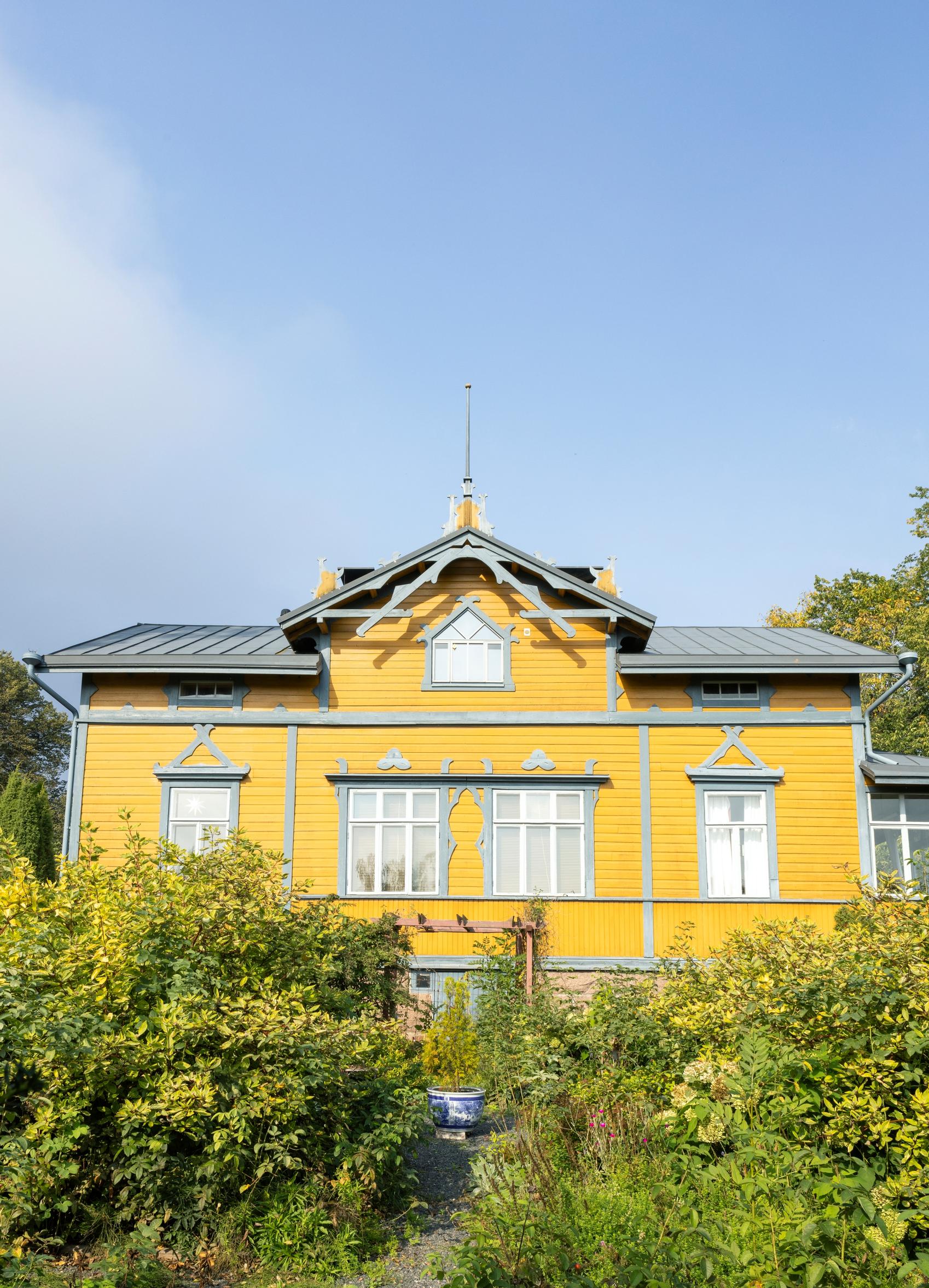
She remains in her 19th-century villa after her husband’s passing: “I’m not yet ready to let go of this place”
Twenty years ago, Sisko Hallavainio and her husband, Risto Aaltonen, fulfilled their dream of a home together and moved from central Helsinki to a 19th-century villa in Loviisa. Each room in Villa Aaltonen glimmers with deep hues, and the garden boasts the world’s largest bee pavilion.
Husband wanted to find a seaside house to renovate, and wife longed for a garden. It was 2005, and Sisko Hallavainio was searching with her late spouse, Finnish actor Risto Aaltonen, for a new home in the countryside. The couple lived in the heart of Helsinki, but after Risto retired, they began dreaming of a quieter life outside the city.
“We had always lived in older properties, even in the city, so it was important for us to find a house built before 1930.”
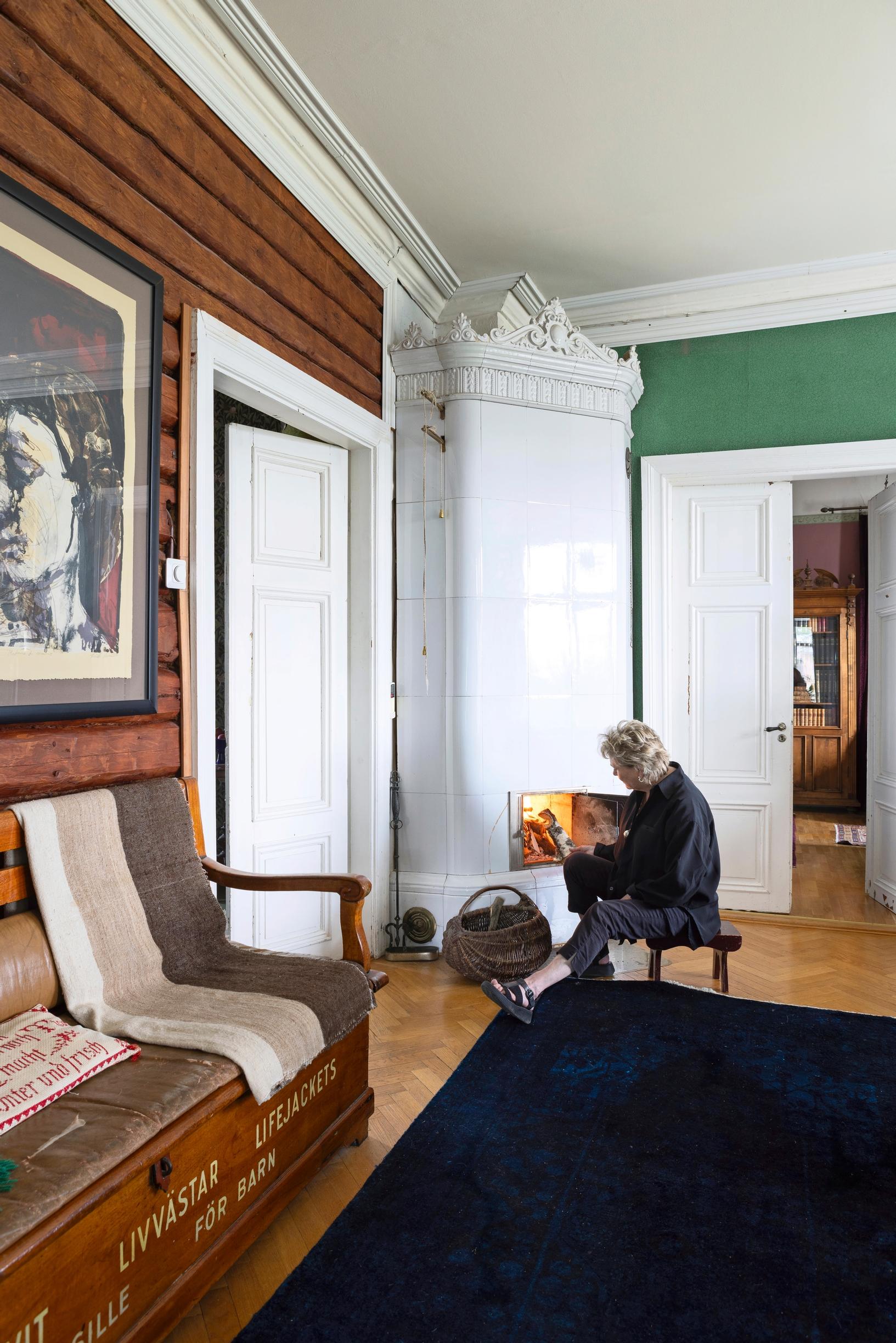
Home: A seaside villa in Loviisa, built in 1898. 180 m² (1,900 ft²). The property also includes a guesthouse and, built in the 1930s, what is reportedly the world’s largest bee pavilion.
Who lives here: Translator Sisko Hallavainio and Millie the cat.
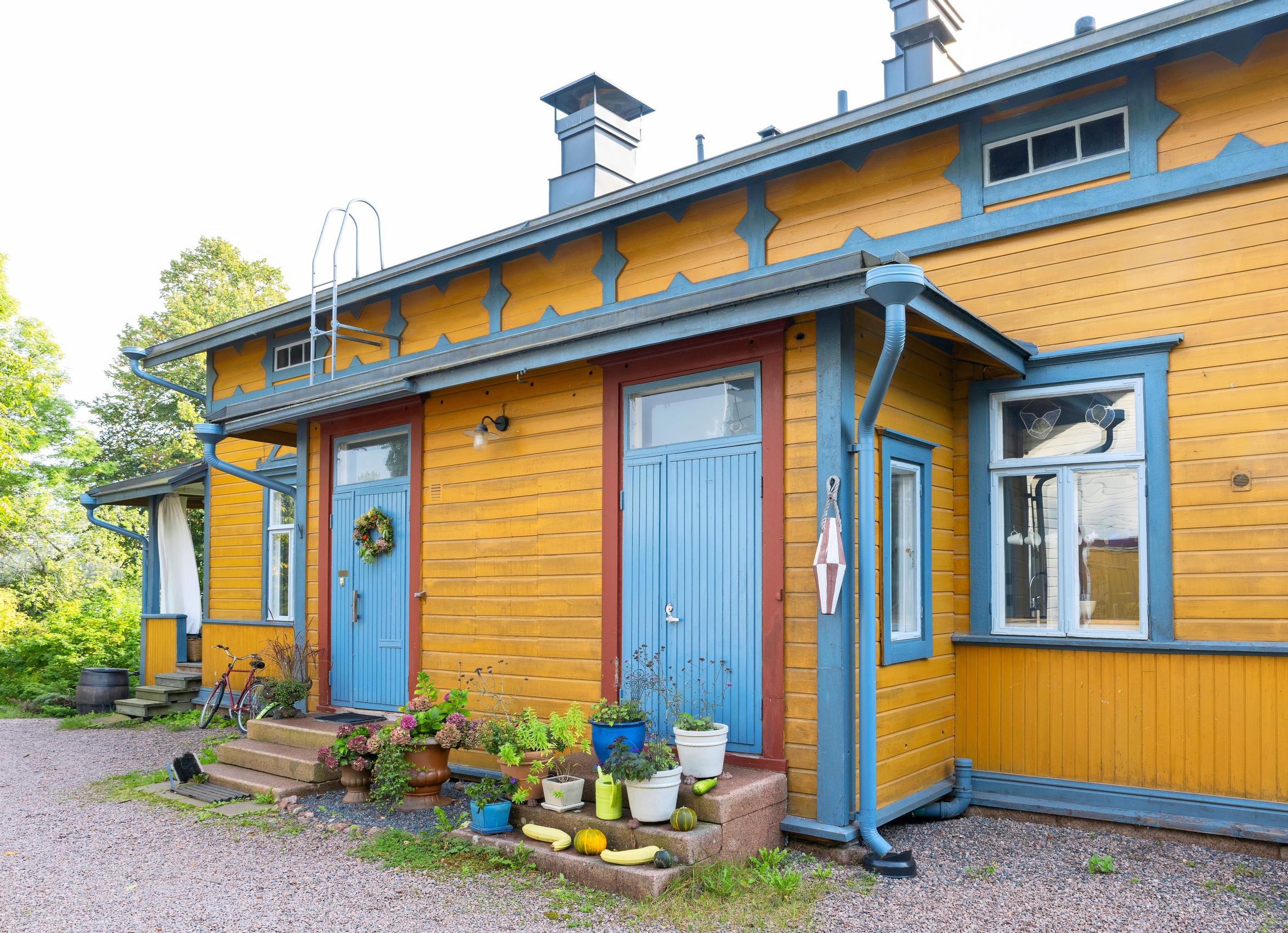
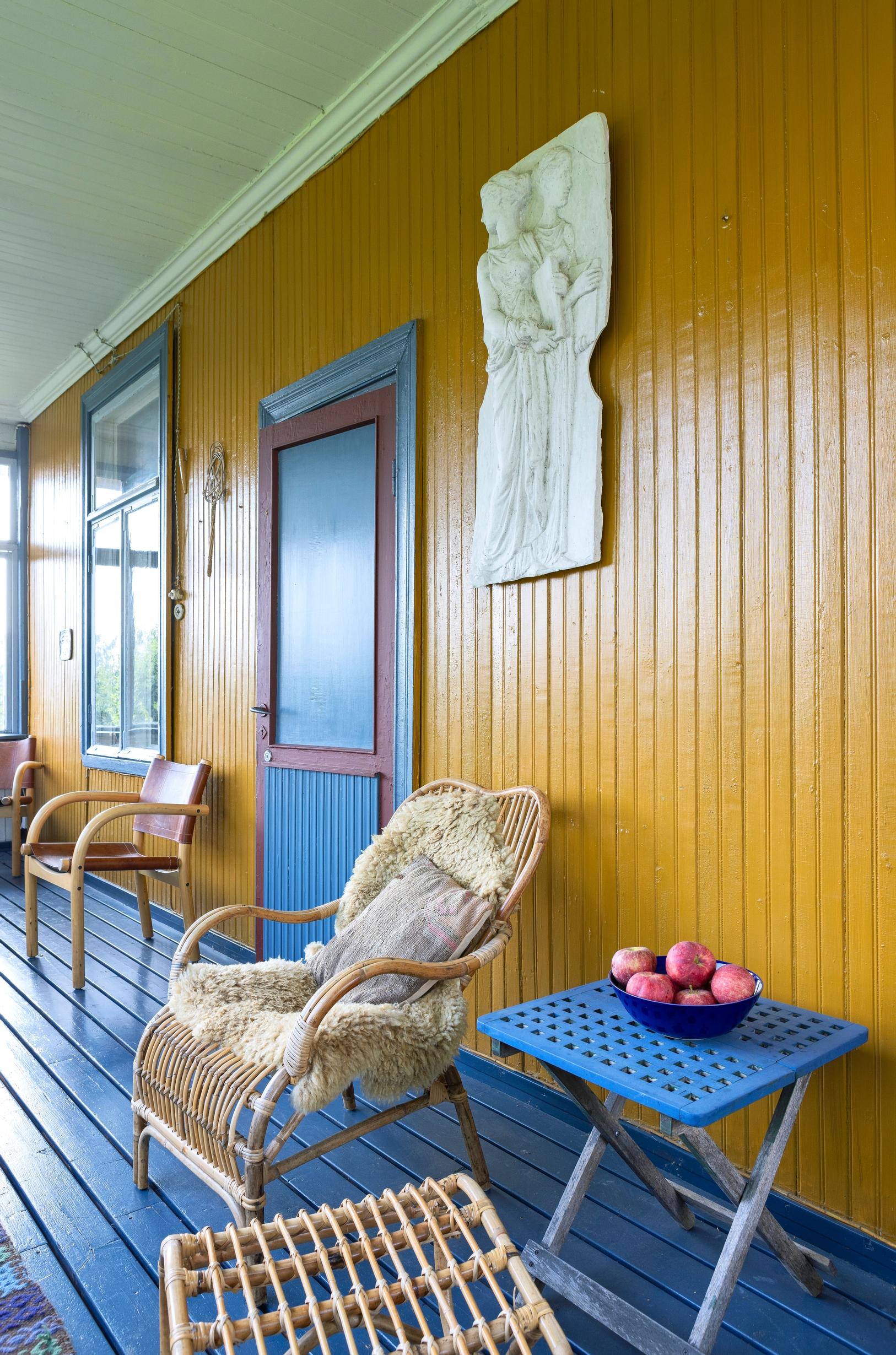
“It was important to us to find a house built before 1930.”
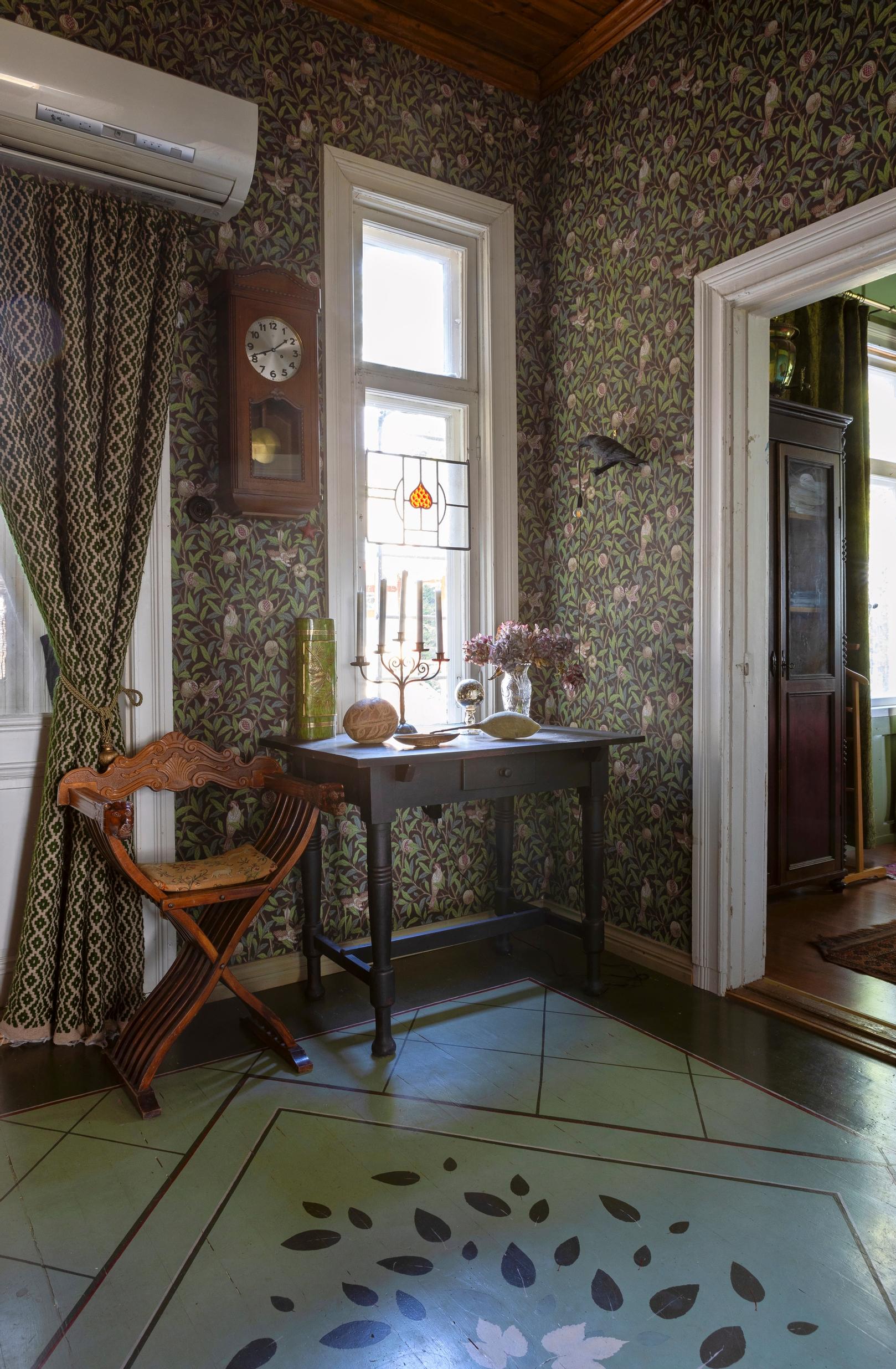
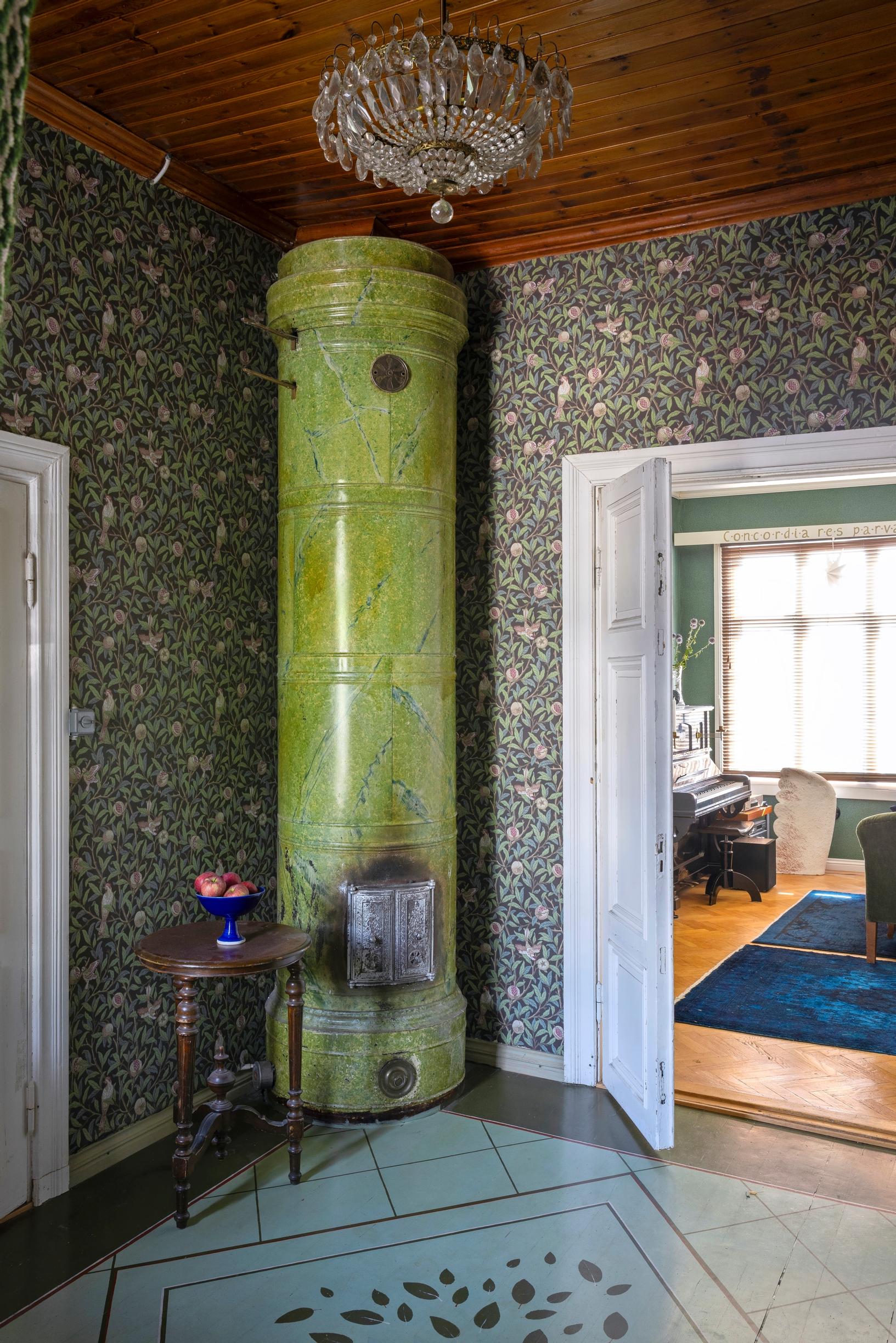
One morning, Sisko spotted a newspaper ad for a long-vacant seaside villa in Loviisa, built in 1898. Originally, it served as a boarding facility for spa guests, and there was also a smaller building for the spa staff.
The deciding factor was the bee pavilion in the garden, built in the 1930s to resemble a small house and said to be the world’s largest. It was commissioned by the son of the family who owned the home at the time.
“I’ve been fascinated by bees ever since I was little, and by how pollinators help a garden thrive. I knew right away that I wanted to revive the old traditions and start producing honey.”
The world’s largest bee pavilion
For twelve years, Sisko produced honey in the bee pavilion on her property. At one point, she had six hives that yielded 500 kg (1,100 lb) of honey. Today, the pavilion serves as a guesthouse for overnight visitors.
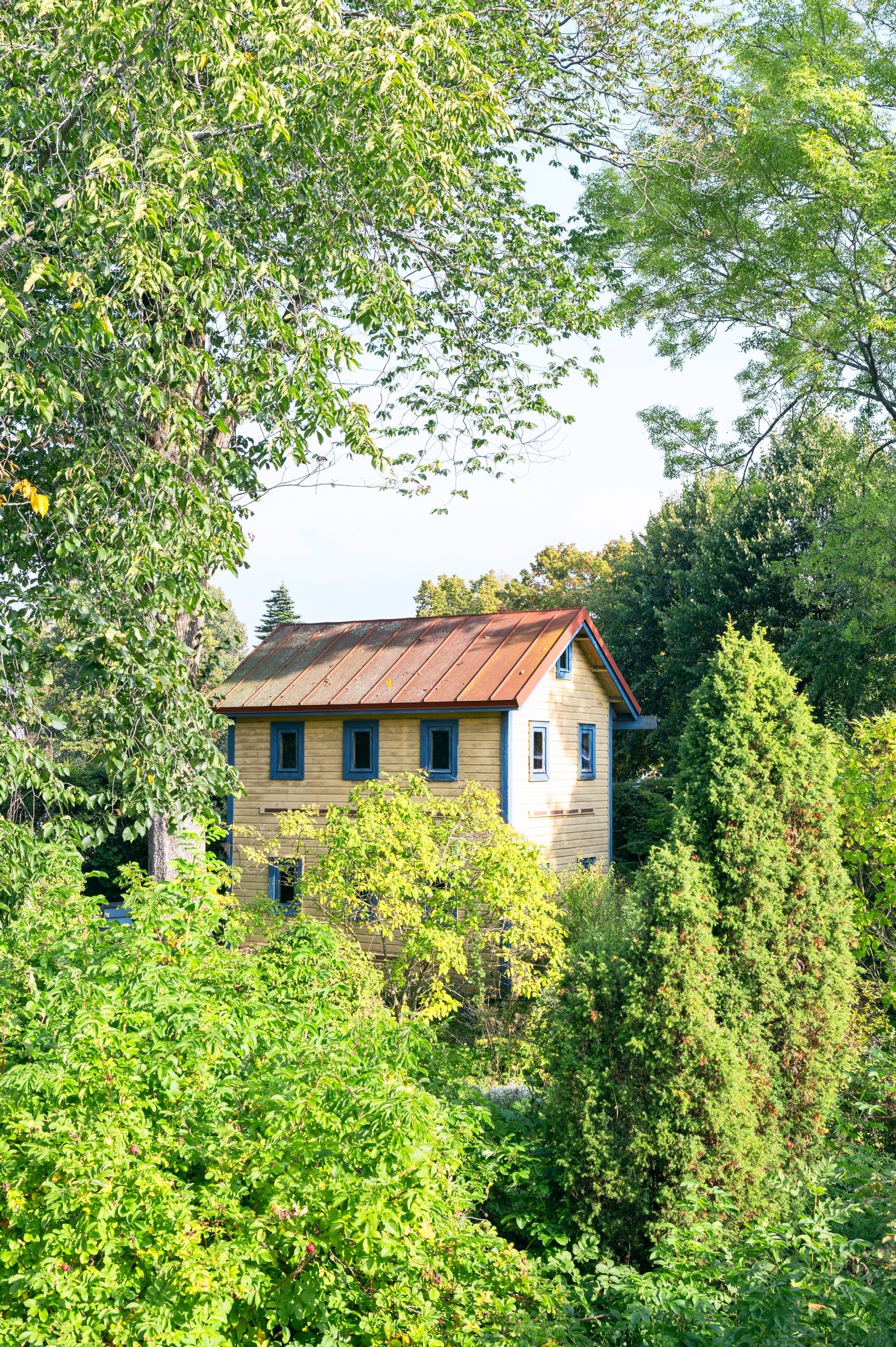
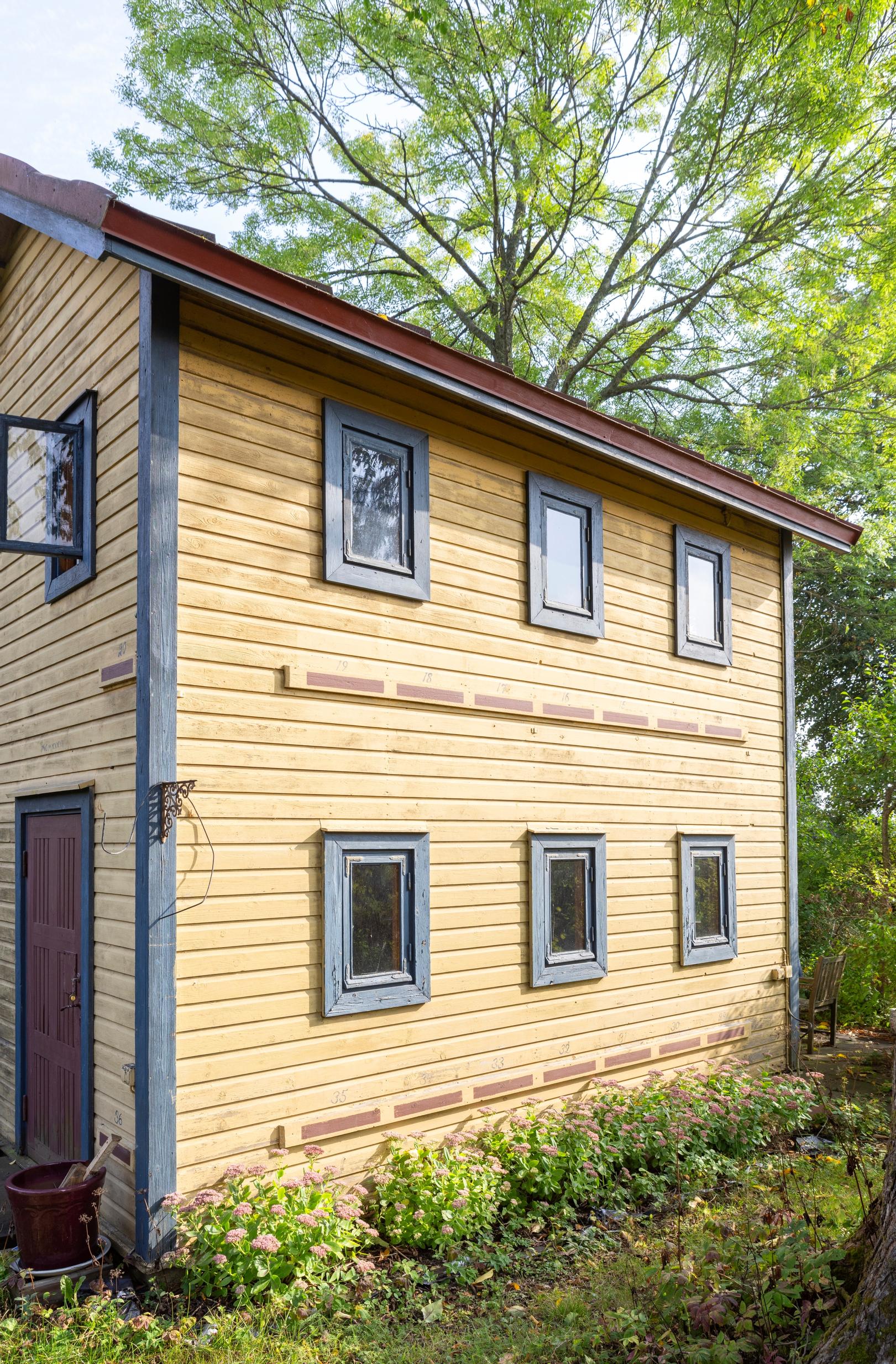
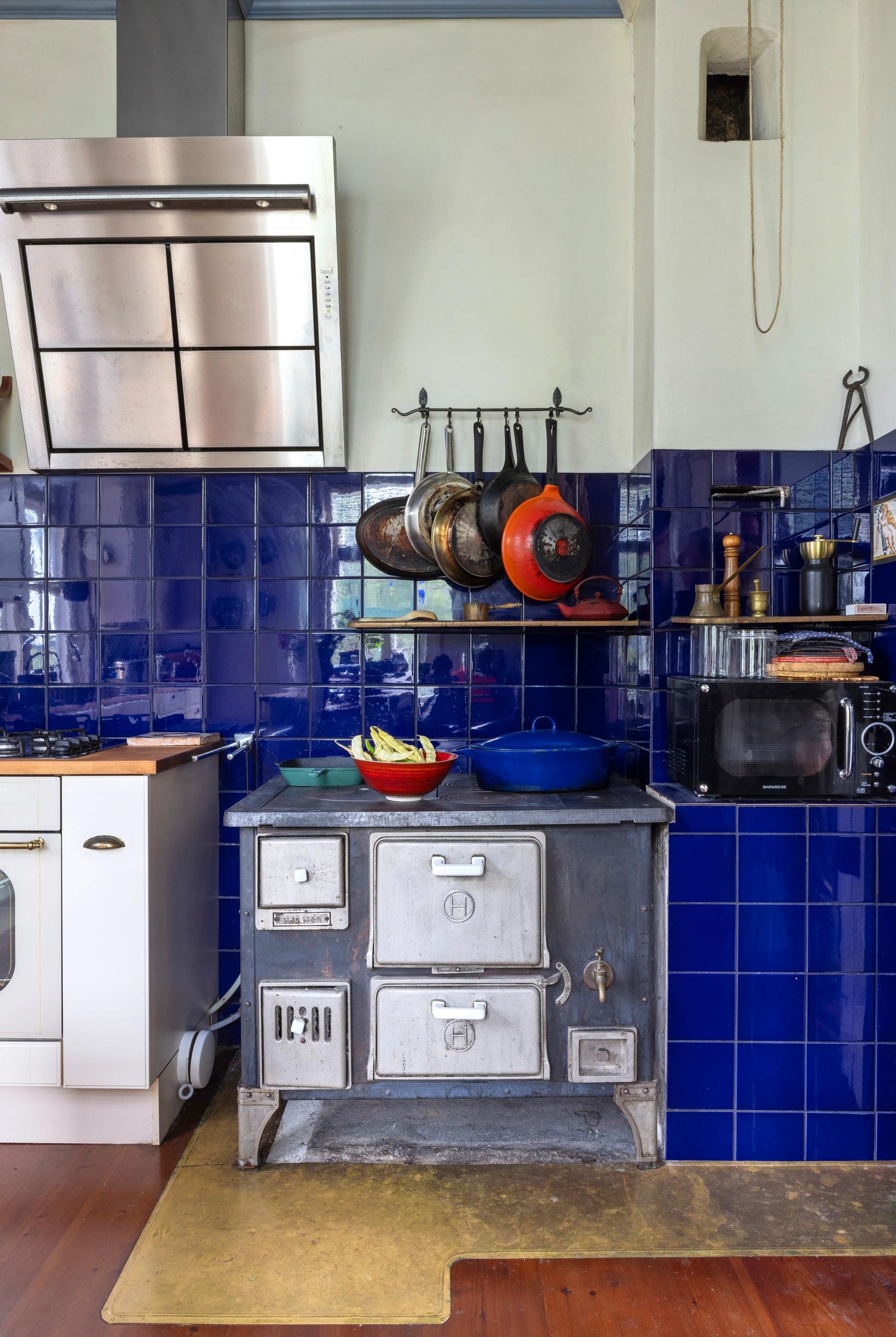
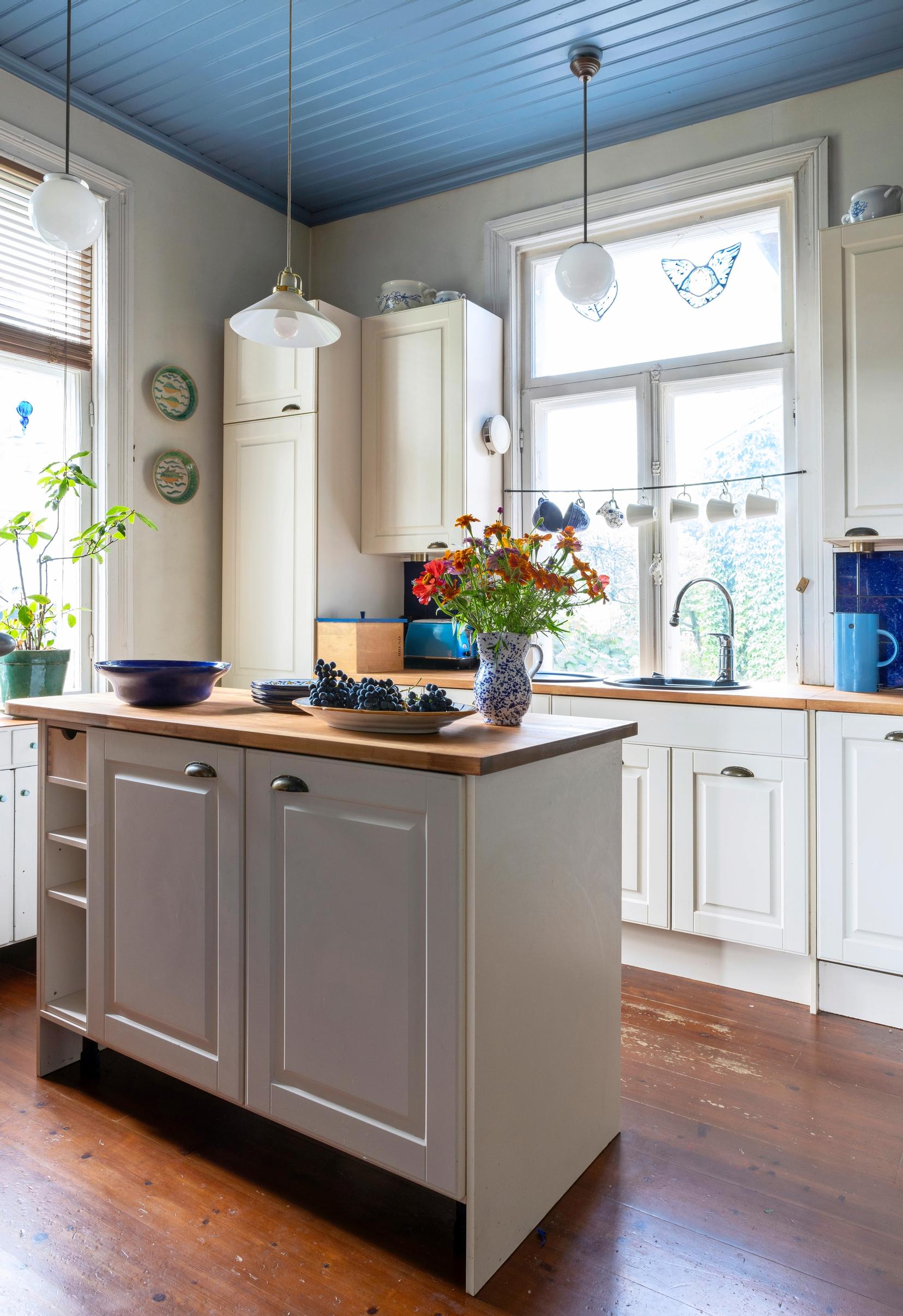
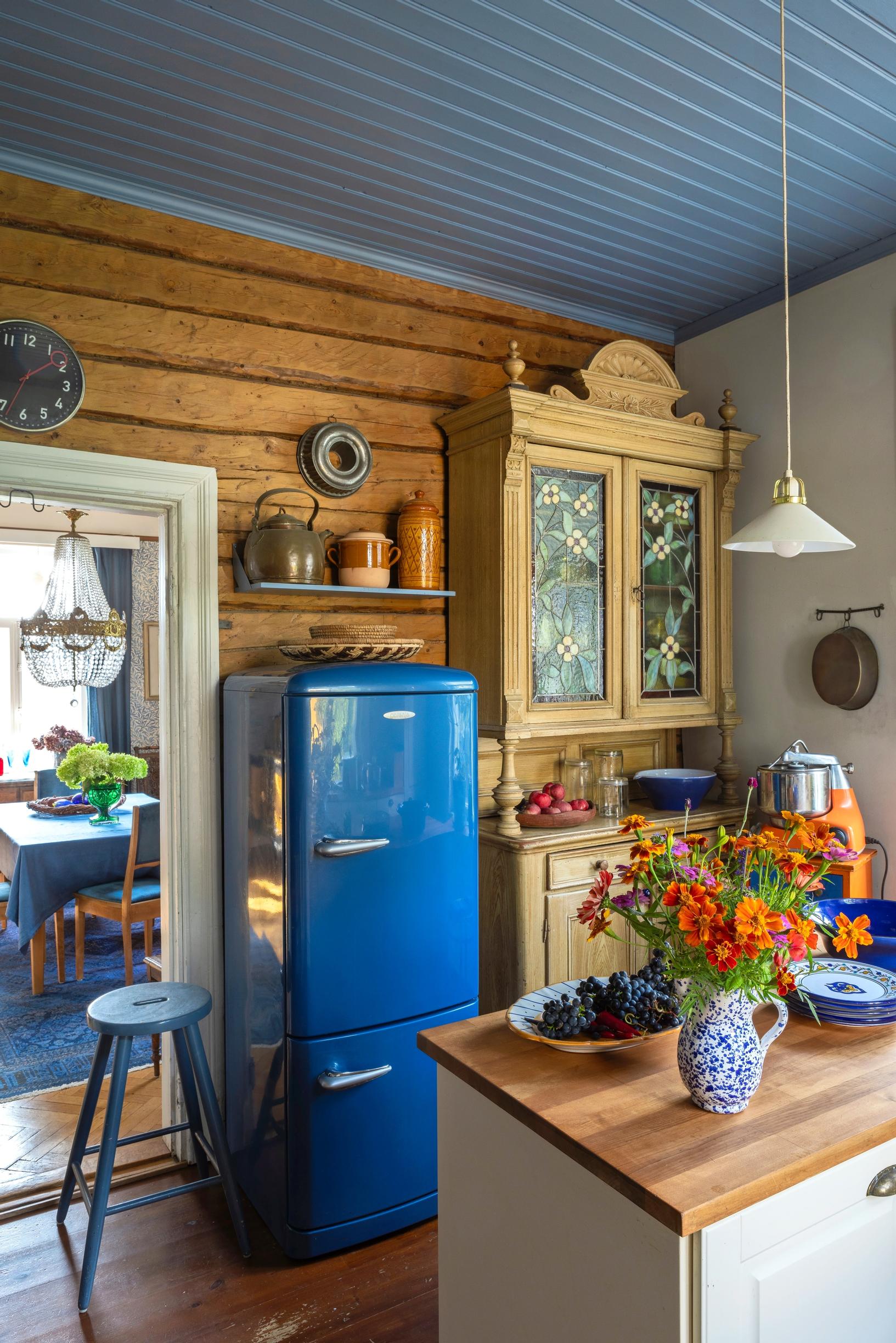
Renovating the house and yard didn’t happen overnight. In the end, the couple spent two years living amid the renovations. The kitchen was excavated down to the ground, and the entire drainage system was replaced before they even started on the garden. Inside, they tackled one room at a time. Some of the floors were covered with vinyl, and the walls bore faded 1970s wallpaper. Sisko’s approach to restoring the house was driven by her love for deep, dark hues, art, and antiques.
“Thanks to the large windows letting in so much light, the spaces can handle these darker shades.”
As you wander through the villa, you can’t help but be charmed by the unusually bold colors for a Finnish home: burgundy, cobalt blue, and emerald green. Sisko notes that these shades follow the décor trends popular in the late 19th century, when the house was built. In some rooms, she uncovered the old dark-wood paneled ceilings. Preserving the house’s heritage has been important to Sisko, which is why, for instance, every wallpaper is by William Morris’s, a key textile and wallpaper designer of that era.
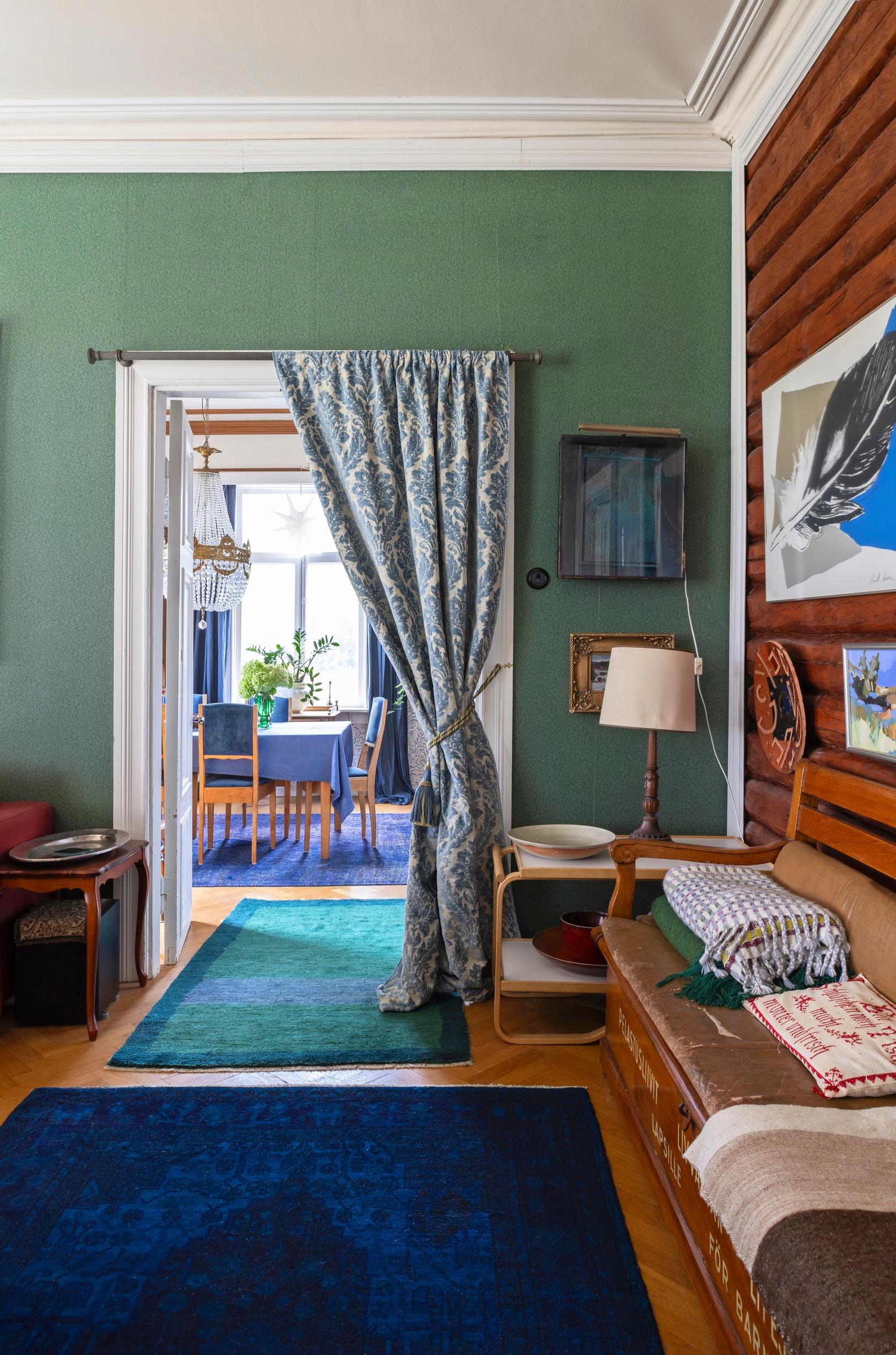
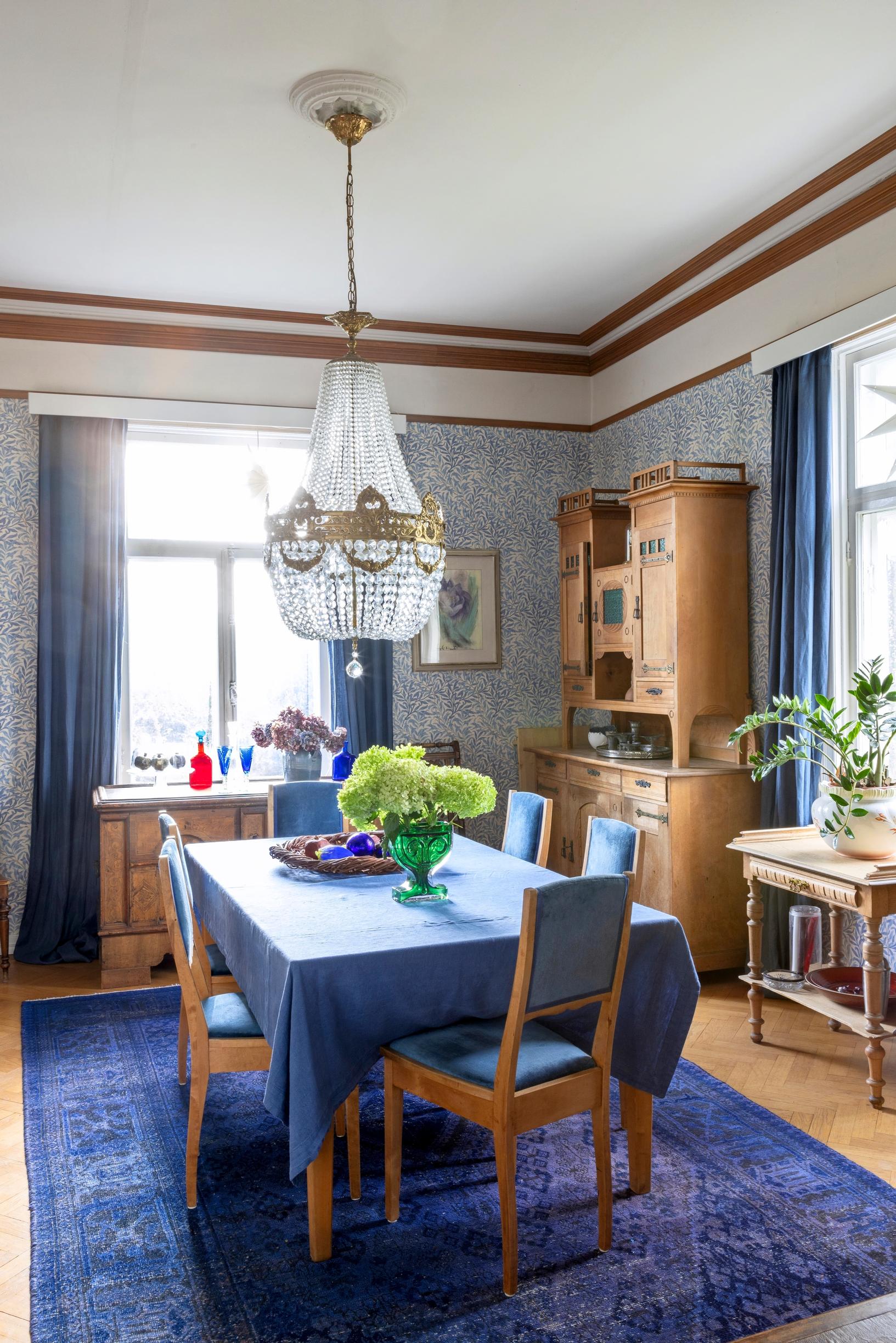
“I’ve been able to live surrounded by all this beauty, like something out of a fairy tale.”

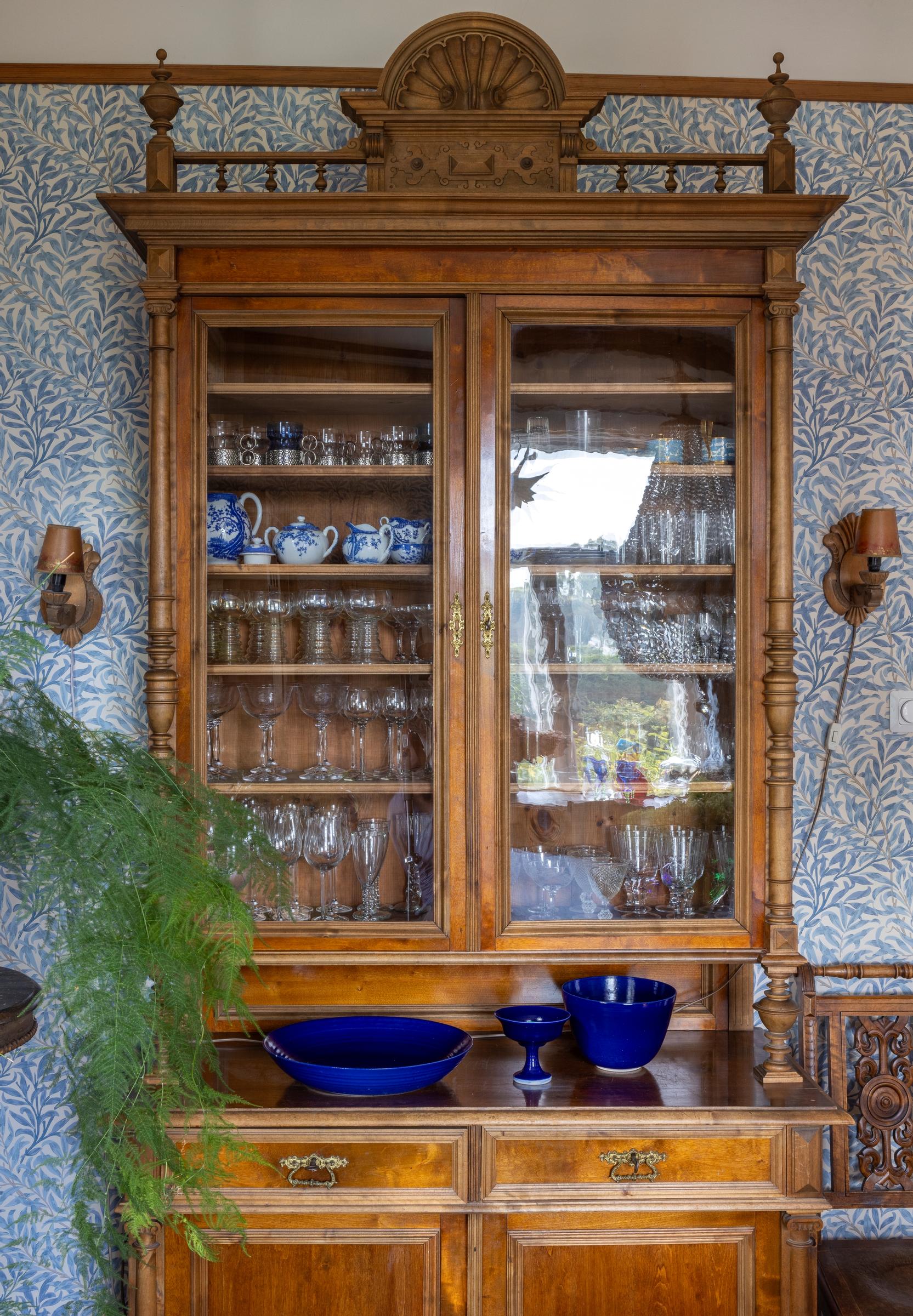
Villa Aaltonen has been enjoyed by Sisko’s culturally minded friends as well as outside visitors. Thanks to her freelance work as a translator, she has been able to host events on the property—including a pop-up restaurant. Guests have included her late husband’s colleagues from the Finnish National Theatre and Finland’s former President Tarja Halonen.
“If I had another life to live, I’d devote my younger energy to opening a small hotel and gastropub here—growing fruit and vegetables in my own garden and spending my days cooking with them.”

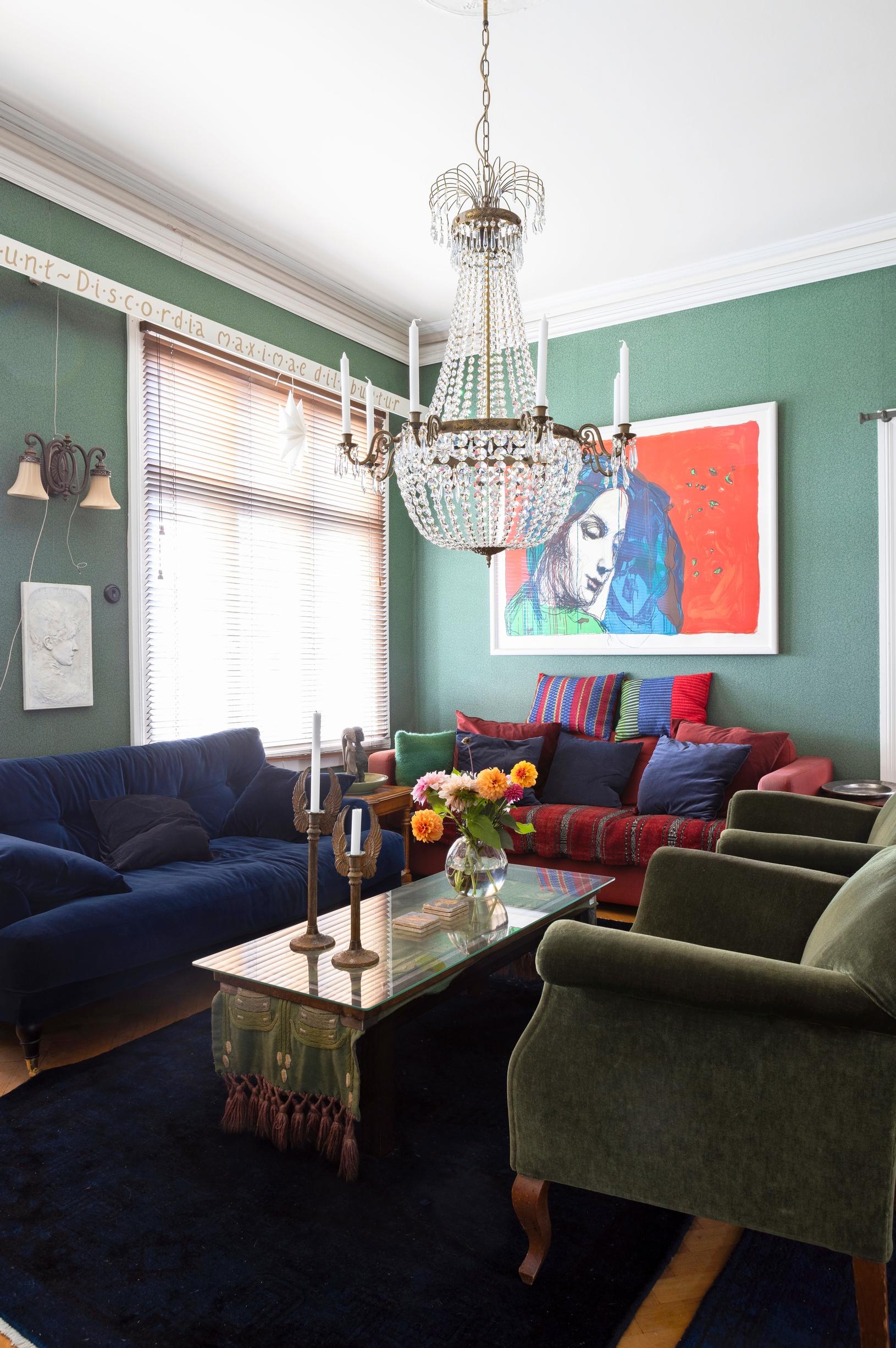
“Thanks to the large windows, the house gets enough light to handle darker shades.”
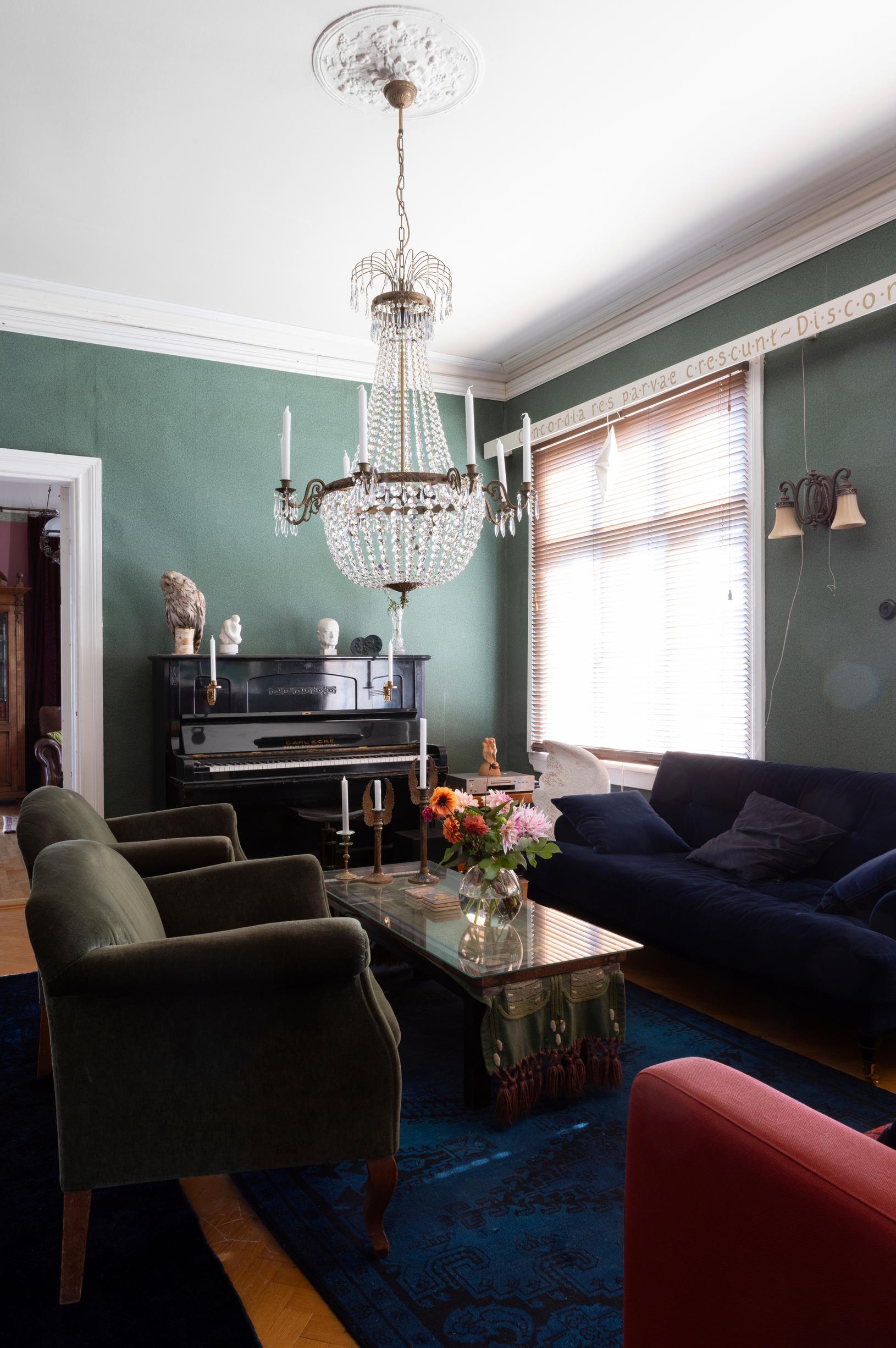

Since Risto’s death in 2021, the large house has grown quieter, but Sisko still enjoys having guests over. She plans to start renting out the smaller house on the property, and might one day expand this idea to the main house.
“I’m not yet ready to let go of this place. Even though the old house—and especially the garden—have taken immense work, I’ve been able to live in the midst of all this beauty, like a fairy tale.”

